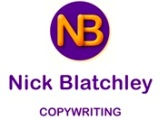Most of us in a specialised area of business have experienced it — the question “So what exactly is it that you do?”
And, of course, it can be very difficult to explain. Not because you don’t know, but because it’s so obvious to you that they might as well be asking “How do you breathe?” The reality is, though, that it’s not nearly so obvious to anyone from outside your sector.
I have this, too. People sometimes want to know what kind of written content a business is likely to need and why it should be important. So I’ve put together a brief guide to the main types of written content a business like yours might require.
Website
This should be fairly obvious. A website needs different types of content (design, images, video etc.), but the written content is crucial, whether that’s hooking people on the home or landing page, showing them who you are on the About page or explaining your services or products.
High-quality content that comes over as authoritative and natural is valuable for two reasons. Firstly, it improves the site’s Google ranking, so that it’s more likely to be found; secondly, it intrigues and engages visitors, making it easier to convert them from audience to prospects.
Blogs
Blogs, which normally sit in a section of your website, are great for both SEO and engagement. Google loves new content, as long as it’s high quality, so regular new blogs will help to keep your ranking high. At the same time, a blog written with authority but accessibly will enhance your reputation as a leader in your sector.
Blogs can give news, information or advice, either about your company, your sector or the wider business world, but it shouldn’t come over as selling. And try not to make it too long, either (people have a low attention span these days) unless you really do have a lot to say. As I do in this post.
Social Media
It’s important to post on social media platforms because that’s where your target customers hang out. If your business is B2B, that’s likely to be LinkedIn first and foremost, while B2C businesses might do better on Facebook, Instagram or Twitter. Remember, though, that business owners are people too and may well hang out on these platforms.
Ideally, social media posts should be a mixture of promoting your business, giving information, intriguing, entertaining — and even occasionally making people laugh. If possible, go for at least 2-3 posts a week, but the important thing is to be consistent.
Newsletters
You work hard to find new contacts and prospects, but the reality is that not all of them will be ready to buy right away. The challenge is to make sure that, when they are ready, you’ll be the first person they think of, and a valuable tool for ensuring that is sending out a regular newsletter.
Newsletters are normally sent by email, often using a platform like MailChimp, and are a mixture of news and insight, written in a way that’s easy to read. Eye-catching images are important, but the real content will be the writing. Monthly is ideal for a newsletter, though you could make them weekly or fortnightly, if you think you can keep the readers’ interest.
Case Studies
As you know, customers are much more likely to buy on your reputation than your promises. So posting case studies of your most successful jobs is an ideal way of illustrating that reputation.
A case study should normally be undertaken with the customer’s consent and cooperation. It will typically include background on the customer, the problems you were addressing, their requirements, what you did and what the outcome was. Ideally, you should obtain a quote from the customer about how you’ve transformed their business.
Mailshots
Reaching out to a specific set of target customers can often be best done via a mailshot. For example, if you’re targeting dental surgeries within a thirty-mile radius of your location, it’s an easier initial introduction than trying to phone them each individually.
Mailshots are most often sent by email, but physical post is making a comeback, now that receiving a letter has become rare enough to make people curious. Whichever method is used, the mailshot should explain, clearly and concisely, what the recipient will gain from using your services, with the aim of getting them to contact you.
Profiles
Online profiles are crucial for the first impression people have of you and could make the difference between whether or not they contact you. Your LinkedIn profile is especially important, but you may also need unique profiles for the website of any organisation you belong to.
The mistake most people make in their profile is to talk exclusively about what they do. Your prospects may be interested in that, but what’s most likely to be most persuasive is how you explain what they’ll get out of using your services.
Leaflets/Brochures
Whether it’s printed or a PDF, a leaflet or a more substantial brochure is valuable as something to give a prospect who’s already interested in your offer, especially if you’re dealing with corporate clients.
Brochures in particular have to be glossy and eye-catching, of course, but they still need compelling written content. After all, when the prospect has been wowed by the images, they’ll want to know what it’s all about.
White Papers
When you’re pitching an idea, it’s vital that the people you’re pitching to understand exactly what it is you’re offering and why they can’t do without it. A glossy brochure may have piqued their curiosity, but now they want hard facts.
A white paper is designed to give exactly that. It should lay out the facts and figures, the benefits and the reasons, clearly and professionally but not in a dry way. A white paper must engage its readers just as much as any other written content.
Articles
A blog is a type of article, of course, but sometimes you need something a little more. For example, if you have a chance to place an article in a leading periodical from your sector, it will enable you to show yourself as an authority among your peers.
It’s difficult to generalise about articles, because each one needs to be tailored to the particular outlet and audience. The only overall requirement is that any article needs to be excellently written.
Books
This might seem a bit extreme, but many business owners publish books. After all, it’s never been so easy to get a book published — although that doesn’t mean it’s OK to skimp on its production.
A business book can convey your expertise or relate your experiences — or both. Either way, it raises your status as a leader in your sector, but of course that only applies if you succeed in the difficult balancing act of writing naturally but compellingly.
This isn’t an exhaustive list of the written content you might need. Some types are sector specific, such as property descriptions for estate agents, for instance, but this should give some idea of the scope of content you might require. Why not book a free chat with me to discuss what written content would boost your business?

